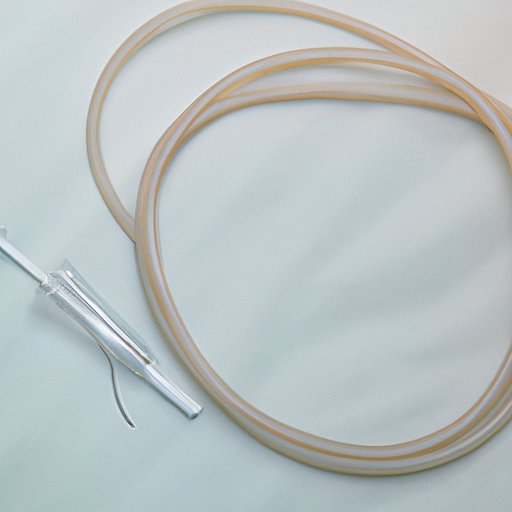Introduction
A catheter is a tube, usually made of plastic or rubber, that is inserted into the body for medical purposes. It can be used to deliver fluids, measure pressure, drain urine from the bladder, or collect samples for laboratory testing. Taking care of a catheter at home requires following your doctor’s instructions closely, changing the catheter regularly, cleaning the area around the catheter, using sterile supplies, flushing the catheter regularly, monitoring for signs of infection, and attaching the catheter securely.
Follow Your Doctor’s Instructions
It is important to follow your doctor’s instructions carefully when taking care of a catheter at home. Your doctor may provide you with detailed instructions on how to take care of your catheter, including how often to change it, how to clean the area around the catheter, what solutions to use when flushing the catheter, and how to attach the catheter securely.
Change the Catheter Regularly
Your doctor will advise you on how often you should change your catheter. Generally, it is recommended that you change your catheter every 4 to 8 weeks. You can get supplies from your doctor, a medical supply store, or an online retailer.
Cleaning the Area Around the Catheter
Before inserting the catheter, it is important to clean the area around the catheter insertion site. Use a mild soap and warm water to gently wash the skin around the catheter. After removing the catheter, you should clean the area again with soap and water.
Use Sterile Supplies
When caring for a catheter at home, it is important to use only sterile supplies. This helps to reduce the risk of infection. You can purchase sterile supplies from your doctor, a medical supply store, or an online retailer.
Flush the Catheter Regularly
It is important to flush the catheter regularly to prevent blockages. Your doctor will advise you on which solutions to use when flushing the catheter. It is generally recommended that you flush the catheter once a day.

Monitor for Signs of Infection
It is important to monitor for signs of infection when taking care of a catheter at home. These signs include redness, swelling, fever, chills, pain, or foul-smelling discharge. If you notice any of these signs, contact your doctor immediately.
Attach the Catheter Securely
The catheter should be attached securely to your body to prevent it from becoming dislodged or pulled out accidentally. There are several methods available for attaching the catheter, such as tape, straps, or tubing holders. It is important to avoid tying knots in the tubing, as this can lead to blockages.
Conclusion
Taking care of a catheter at home requires following your doctor’s instructions closely, changing the catheter regularly, cleaning the area around the catheter, using sterile supplies, flushing the catheter regularly, monitoring for signs of infection, and attaching the catheter securely. Following these steps will help ensure that you remain healthy and safe while using a catheter at home.
(Note: Is this article not meeting your expectations? Do you have knowledge or insights to share? Unlock new opportunities and expand your reach by joining our authors team. Click Registration to join us and share your expertise with our readers.)
